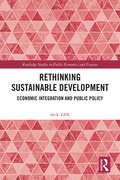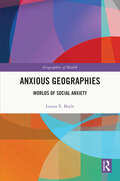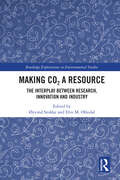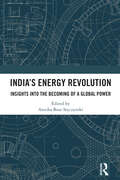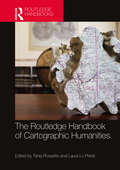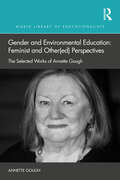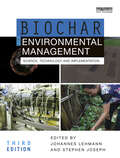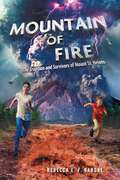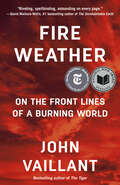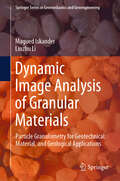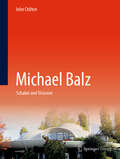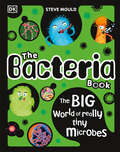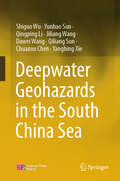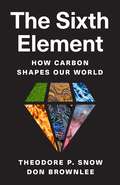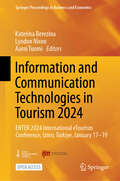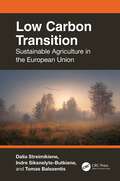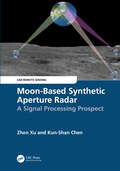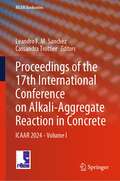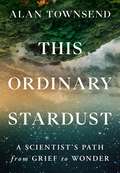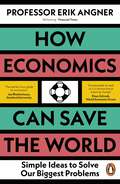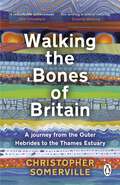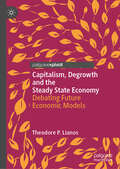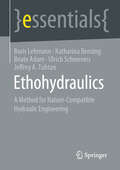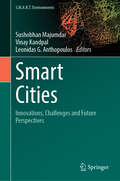- Table View
- List View
Rethinking Sustainable Development: Economic Integration and Public Policy (Routledge Studies in Public Economics and Finance)
by Seck TANThis book demonstrates falsified economic performance of global economies when the environment is not recognised as a capital, and when the ecosystem is overlooked towards sustainable development.Seck begins with an analysis of standard macroeconomic framework and policy practice. He argues, with reference to environmental accounting literature, that environmental capital must form an integral component of economic measurement. This paves the way for an alternative environmental-macroeconomics framework for policy analysis that promotes sustainable development. The book demonstrates how environmental capital can be measured with reference to select OECD countries and provides a methodology for analysing how macroeconomic goals are related to a steady-state economy. Seck then concludes with a summary of the conflict between current economic growth and ecosystem preservation, and outlines possible policy improvements and directions for research.Rethinking Sustainable Development is an invaluable reference for policymakers as well as researchers and students of environmental economics, sustainable development, and macroeconomics.
Anxious Geographies: Worlds of Social Anxiety (ISSN)
by Louise E. BoyleAnxious Geographies offers a unique perspective on social anxiety, framing it as both a social and spatial phenomenon. Through a meticulous exploration using online questionnaires and interviews, the book provides a crucial examination of the intricacies of anxious lives.This book presents a critical intervention in the experience of mental health in 21st-century society and provides a compelling geographical account of the underpinnings of the anxious experience. The book pivots on the in-depth perspectives of people with social anxiety, diagnosed or “sub-clinical”, but with an academic commentary that relates their experience to the medicalisation of a disrupted relational life, offering lessons for all of us in modern societies. Each chapter considers a unique aspect of social anxiety accounting for the social, spatial, temporal, relational and embodied dynamics, a geographical approach that enriches our understanding of the contexts and conditions that exacerbate and sustain anxious distress. The phenomenological descriptions herein, capture how social anxiety can profoundly alter a person’s coherent, habitual and embodied sense of being in and navigating through their social and spatial worlds. Through the experiential accounts of anxious distress and by considering the social contexts in which they emerge, this book provides readers with crucial insights into the hidden lives of those living with social anxiety.This book will be of appeal to academics, researchers and postgraduate students in the fields of human geography and across the social sciences and humanities. It will also provide useful insights for academics and health professionals in social psychiatry, social psychology, counselling studies and therapeutic practice.
Making CO2 a Resource: The Interplay Between Research, Innovation and Industry (Routledge Explorations in Environmental Studies)
by Elin M. Oftedal Øyvind StokkeThis interdisciplinary book explores how CO2 can become a resource instead of a waste and, as such, be a tool to meet one of the grandest challenges humanity is facing: climate change.Drawing on a Norwegian narrative that has significance for a global audience, Øyvind Stokke and Elin Oftedal introduce in-depth, multi-perspective analyses of a sustainable innovation research experiment in industrial carbon capture and utilisation technologies. Building on extensive literature within marine sciences, sustainability research, and environmental philosophy and ethics, this book documents how a misplaced resource like CO2 can become valuable within a circular economy in its own right, while at the same time meeting the challenge of food security in a world where food production is increasingly under pressure. The book is diverse in scope and includes chapters on how to reduce the environmental footprint of aquaculture by replacing wild fish and soy from the Amazon, how to optimise the monitoring of aquatic environments via smart technologies, and how to replace materials otherwise sourced from natural environments. The authors also analyse the pivotal role of the university in driving innovation and entrepreneurship, the pitfalls of different carbon technologies, and explore how the link between petroleum dependence and CO2 emissions has been addressed in Norway specifically.Making CO2 a Resource will be of great interest to students and scholars of climate change, environmental ethics, environmental philosophy, sustainable business and innovation, and sustainable development more broadly.
India’s Energy Revolution: Insights into the Becoming of a Global Power
by Annika Bose StyczynskiIndia is the third-largest emitter of greenhouse gases, which makes it an important player whose climate mitigation actions and inactions are closely scrutinised. This book studies developments in India’s energy system from a governance perspective. It presents a unique compilation and synthesis of research findings that capture achievements, shortcomings, and persistent and transient challenges of India’s transition towards a net-zero economy by 2070.The book grounds its analysis in domestically formulated goals and reflects on dynamics at the structural level of India’s multi-scalar innovation system, by highlighting the influencing factors of energy system status and change. It presents the perspectives and positions of different actor groups, studies the market and business, and discusses cases influenced by existing or changing institutions across the whole spectrum of energy resources from fossil to non-fossil fuels and respective technologies.The volume will be useful for students and researchers in energy governance, energy policy and economics, socio-technical transition studies, energy systems engineering, sustainable development, and environmental studies. It will also be of interest to policymakers and investors.
The Routledge Handbook of Cartographic Humanities
by Tania Rossetto Laura Lo PrestiThe Routledge Handbook of Cartographic Humanities offers a vibrant exploration of the intersection and convergence between map studies and the humanities through the multifaceted traditions and inclinations from different disciplinary, geographical and cultural contexts.With 42 chapters from leading scholars, this book provides an intellectual infrastructure to navigate core theories, critical concepts, phenomenologies and ecologies of mapping, while also providing insights into exciting new directions for future scholarship. It is organised into seven parts: Part 1 moves from the depths of the humans–maps relation to the posthuman dimension, from antiquity to the future of humanity, presenting a multidisciplinary perspective that bridges chronological distances, introspective instances and social engagements. Part 2 draws on ancient, archaeological, historical and literary sources, to consider the materialities and textures embedded in such texts. Fictional and non-fictional cartographies are explored, including layers of time, mobile historical phenomena, unmappable terrain features, and even animal perspectives. Part 3 examines maps and mappings from a medial perspective, offering theoretical insight into cartographic mediality as well as studies of its intermedial relations with other media. Part 4 explores how a cultural cartographic perspective can be productive in researching the digital as a human experience, considering the development of a cultural attentiveness to a wide range of map-related phenomena that interweave human subjectivities and nonhuman entities in a digital ecology. Part 5 addresses a range of issues and urgencies that have been, and still are, at the centre of critical cartographic thinking, from politics, inequalities and discrimination. Part 6 considers the growing amount of literature and creative experimentation that involve mapping in practices of eliciting individual life histories, collective identities and self-accounts. Part 7 examines the variety of ways in which we can think of maps in the public realm. This innovative and expansive Handbook will appeal to those in the fields of geography, art, philosophy, media and visual studies, anthropology, history, digital humanities and cultural studies as well as industry professionals.
Gender and Environmental Education: The Selected Works of Annette Gough (World Library of Educationalists)
by Annette GoughThis timely book provides a starting point for critical analysis and discourse about the status of gendered perspectives in environmental education research.Through bringing together selected writings of Annette Gough, it documents the evolving discussions of gender in environmental education research since the mid-1990s, from its origins in putting women on the agenda through to women’s relationships with nature and ecofeminism, as well as writings that engage with queer theory, intersectionality, assemblages, new materialisms, posthumanism and the more-than-human. The book is both a collection of Annette Gough, and her collaborators, writings around these themes and her reflections on the transitions that have occurred in the field of environmental education related to gender since the late 1980s, as well as her deliberations on future directions.An important new addition to the World Library of Educationalists, this book foregrounds women, their environmental perspectives, and feminist and other gendered research, which have been marginalised for too long in environmental education.
Biochar for Environmental Management: Science, Technology and Implementation
by Stephen Joseph Johannes LehmannFully revised and updated for its third edition, this book presents the definitive compilation of current knowledge on all aspects of biochar.Research on biochar continues to accelerate as its importance for soil health, climate change mitigation and adoption, and the circular economy becomes more widely acknowledged. This book not only reviews recent advances made in our understanding of biochar properties, behavior, and effects in agriculture, environmental management, and material production, but specifically develops fundamental principles and frameworks of biochar science and application. This third edition has been fully revised and updated to reflect recent developments and growing trends, with important coverage of the application of biochar outside of its traditional soil-based uses, the commercialization of biochar, and its incorporation into policy. This includes brand new chapters on the role of biochar-based materials for environmental remediation, building construction, and animal feed, and a greater discussion of biochar's role in the circular economy, climate change mitigation, and sustainable development. Overall, this book provides a systematic, comprehensive, and global examination of biochar. Written by an international team of academics and professionals, it addresses its uses, production, and management and its broader potential for mitigating climate change and driving forward sustainable development.Edited by two leading figures in the field, Biochar for Environmental Management is essential reading for students, scholars, practitioners, and policymakers interested in biochar and the role it can play in environmental sustainability and global sustainable development.
Mountain of Fire: The Eruption and Survivors of Mount St. Helens
by Rebecca E. BaroneMountain of Fire is the narrative nonfiction account of the violent volcanic eruption of Mount St. Helens on May 18, 1980, the story of the people who died, those who survived, and the heroes who fought to raise an alarm.For weeks, the ground around Mount St. Helens shuddered like a dynamite keg ready to explode. There were legends of previous eruptions: violent fire, treacherous floods, and heat that had scoured the area. But the shaking and swelling was unlike any volcanic activity ever seen before. Day and night, scientists tried to piece together the mountain’s clues—yet nothing could prepare them for the destruction to come. The long-dormant volcano seethed away, boiling rock far below the surface. Washington’s governor, Dixie Lee Ray, understood the despair that would follow from people being forced from their homes. How and when should she give orders to evacuate the area? And would that be enough to save the people from the eruption of Mount St. Helens?Includes a QR code for a website featuring eye-catching photos of the eruption.
Fire Weather: On the Front Lines of a Burning World
by John VaillantPULITZER PRIZE FINALIST • A NEW YORK TIMES TOP TEN BOOK OF THE YEAR • FINALIST FOR THE NATIONAL BOOK AWARD IN NONFICTION • A stunning account of a colossal wildfire and a panoramic exploration of the rapidly changing relationship between fire and humankind from the award-winning, best-selling author of The Tiger and The Golden Spruce • Winner of the Baillie Gifford Prize for Non-FictionA BEST BOOK OF THE YEAR: The New York Times, The Washington Post, The New Yorker, TIME, NPR, Slate, and Smithsonian&“Grips like a philosophical thriller, warns like a beacon, and shocks to the core." —Robert Macfarlane, bestselling author of Underland&“Riveting, spellbinding, astounding on every page.&” —David Wallace-Wells, #1 bestselling author of The Uninhabitable EarthIn May 2016, Fort McMurray, the hub of Canada&’s oil industry and America&’s biggest foreign supplier, was overrun by wildfire. The multi-billion-dollar disaster melted vehicles, turned entire neighborhoods into firebombs, and drove 88,000 people from their homes in a single afternoon. Through the lens of this apocalyptic conflagration—the wildfire equivalent of Hurricane Katrina—John Vaillant warns that this was not a unique event, but a shocking preview of what we must prepare for in a hotter, more flammable world.Fire has been a partner in our evolution for hundreds of millennia, shaping culture, civilization, and, very likely, our brains. Fire has enabled us to cook our food, defend and heat our homes, and power the machines that drive our titanic economy. Yet this volatile energy source has always threatened to elude our control, and in our new age of intensifying climate change, we are seeing its destructive power unleashed in previously unimaginable ways.With masterly prose and a cinematic eye, Vaillant takes us on a riveting journey through the intertwined histories of North America&’s oil industry and the birth of climate science, to the unprecedented devastation wrought by modern forest fires, and into lives forever changed by these disasters. John Vaillant&’s urgent work is a book for—and from—our new century of fire, which has only just begun.
Dynamic Image Analysis of Granular Materials: Particle Granulometry for Geotechnical, Material, and Geological Applications (Springer Series in Geomechanics and Geoengineering)
by Magued Iskander Linzhu LiThis book explores the effectiveness of Dynamic Image Analysis (DIA) in granulometry studies of sand, and presents criteria for soil characterization using DIA, including test parameters, specimen size, efficacy in gap-graded soils, and its limitations. DIA is a modern experimental technique used to analyze and classify particulate materials based on their size, shape, and other morphological properties. This method employs a high-frame-rate camera to capture images of individual sand particles, which have been transported and separated using various techniques. DIA generates both particle size and shape information by analyzing thousands to millions of particles, providing a quantitative statistical description of grain size and shape distribution within the specimen. The manuscript also offers a comprehensive examination of 2D and 3D particle size and shape descriptors. It demonstrates that there is no correlation between size and shape parameters in many sands and that shape descriptors can be reduced to four independent parameters representing sand granulometry at different scales. Additionally, the use of DIA in exploring the depositional history of two complex calcareous sands is presented. The manuscript presents the properties of 30 representative sands, including size and shape parameters, and fits them to statistical distributions. The investigated soils encompass both natural and machine-sorted materials, particles with regular and irregular shapes, as well as siliceous and calcareous sands. Physical granulometry of sand particles is compared using 2D, 3D DIA, and micro-computed tomography (μCT). The work demonstrates that DIA offers significant advantages in terms of efficiency for 3D shape analysis while providing an adequate representation of particle sizes and shapes of most sands. Finally, the manuscript integrates classical geotechnical engineering with computer vision and artificial intelligence. Size and shape descriptors are utilized for sand classification through machine learning models. This work represents a crucial step toward the automatic machine classification of soils, potentially enabling on-site classification using smartphones equipped with high-resolution cameras.
Michael Balz: Schalen und Visionen
by John ChiltonDieses Buch gibt einen Überblick über das Werk des Architekten Michael Balz, dem Pionier der Betonschalenarchitektur. Es behandelt seine realisierten und nicht realisierten Projekte, von denen viele in Zusammenarbeit mit dem renommierten Schweizer Ingenieur Heinz Isler entworfen wurden.Michael Balz. Schalen und Visionen ist reichlich mit Originalzeichnungen und Fotos illustriert: Schalen und Visionen trägt dem zunehmenden Interesse am Entwurf und der Konstruktion von Stahlbeton-Freiformschalen Rechnung, das mit dem Aufkommen von 3D-Modellierungs- und Formfindungssoftware einhergeht. Das Buch beschreibt architektonische Entwürfe und praktische Konstruktionsfragen, um zeitgenössische Schalendesigner zu motivieren.Balz' Erfahrung im Umgang mit Schwierigkeiten wie der Unvereinbarkeit mit nicht-strukturellen Merkmalen und dem Einbau von Fenstern in Schalen sowie der Bewertung der langfristigen Leistungsfähigkeit von Gebäuden ermöglicht es den Lesern, leichterzu lernen, wie sie mit solchen Problemen bei ihrer eigenen Arbeit umgehen können.Das Buch stellt Michael Balz vor, seine frühe Arbeit mit anderen Architekten, einschließlich seiner Arbeit an pneumatischen Formen mit Frei Otto, und seine Entwicklung zu einem Vertreter der organischen Architektur. Anschließend werden realisierte Projekte besprochen, darunter das Theater unter den Kuppeln (1976), der Ballettsaal (1979) und das Haus Balz (1981). Wettbewerbe, an denen Balz teilgenommen hat, und nicht realisierte Rohbauprojekte finden ebenfalls Beachtung, ebenso wie seine Arbeiten im städtischen Maßstab, wobei die konzeptionellen Entwürfe für Megastädte im Mittelpunkt stehen. Seine visionären Megastrukturen ermutigen Architekten, angesichts der zunehmenden Urbanisierung innovative Lösungen für den Stadtraum zu finden. Michael Balz: Schalen und Visionen wird für Studenten und Fachleute aus den Bereichen Architektur, Bauingenieurwesen, Bauwesen und Stadtplanung vonInteresse sein. Die Überlegungen zu den kulturellen und kontextuellen Aspekten von Balz' Werk werden dem Architekturhistoriker helfen, seine langfristige Bedeutung zu schätzen.
The Bacteria Book: Gross Germs, Vile Viruses and Funky Fungi (The Science Book Series)
by Steve MouldIn this fun, fact-packed science book for kids, young readers will discover the bacteria, viruses, and other germs and microbes that keep our bodies and our world running, as well as how and when they can be harmful and the precautions we can take to prevent them from becoming so.Meet a glowing squid, traveling fungus spores, and much more. The Bacteria Book walks the line between "ew, gross!" and "oh, cool!," exploring why we need bacteria and introducing readers to its microbial mates-viruses, fungi, algae, archaea, and protozoa.The Bacteria Book is a fun and informative introduction to a STEM subject that brings kids up-close to the big world of tiny science. With remarkable photography, kooky character illustrations, and lots of fun facts, this book uses real-life examples of microbiology in action to show how tiny microbes affect us in big ways.
Deepwater Geohazards in the South China Sea
by Shiguo Wu Yunbao Sun Qingping Li Jiliang Wang Dawei Wang Qiliang Sun Chuanxu Chen Yangbing XieThis book comprehensively analyzes and summarizes the types, characteristics and prevention of deep-sea geological disasters in the South China Sea based on the research progress of global background. It also brings attention to the general public and stakeholders the risks of deep-sea geological disasters.
The Sixth Element: How Carbon Shapes Our World
by Theodore P. Snow Don BrownleeA cosmic perspective on carbon—its importance in the universe and our livesWhen we think of carbon, we might first think of a simple element near the top of the periodic table: symbol C, atomic number 6. Alternatively, we might think of something more tangible—a sooty piece of coal or a sparkling diamond, both made of carbon. Or, as Earth&’s temperature continues to rise alarmingly, we might think of the role carbon plays in climate change. Yet carbon&’s story begins long ago, far from earthly concerns. In The Sixth Element, astronomers Theodore Snow and Don Brownlee tell the story of carbon from a cosmic perspective—how it was born in the fiery furnaces of stars, what special chemical and physical properties it has, and how it forms the chemical backbone of the planets and all life as we know it. Foundational to every part of our lives, from our bodies to the food, tools, and atmosphere that sustain our existence, carbon is arguably humankind&’s most important element.Snow and Brownlee offer readers the ideal introduction to the starry element that made our world possible and shapes our lives. They first discuss carbon&’s origin, discovery, and unique ability to bond with other elements and form countless molecules. Next, they reveal carbon&’s essential role in the chemical evolution of the universe and the formation and evolution of galaxies, stars, planets, and life, and then, more generally, its technological uses and its influence on Earth&’s climate. Bringing readers on a historical, scientific, and cross-disciplinary journey, The Sixth Element illuminates the cosmic wonder that is carbon.
Information and Communication Technologies in Tourism 2024: ENTER 2024 International eTourism Conference, Izmir, Türkiye, January 17-19 (Springer Proceedings in Business and Economics)
by Lyndon Nixon Katerina Berezina Aarni TuomiFor more than 30 years, Information and Communication Technology (ICT) has been revolutionizing travel, tourism, and hospitality, and as we look to the next 30 years, the change of pace does not seem to be diminishing. This open-access book provides an extensive overview of the latest developments of ICTs in the tourism and hospitality industry. Featuring papers presented at the International Federation for IT and Travel & Tourism’s (IFITT) 31st annual ENTER International eTourism Conference (ENTER24) held in Izmir, Türkiye, this book presents research on topics such as artificial general intelligence (AGI) in tourism and hospitality; emerging technologies in tourism education; virtual reality; technologies for sustainability, health and wellbeing; big data and analytics, among others. This is an open access book.
Low Carbon Transition: Sustainable Agriculture in the European Union
by Dalia Streimikiene Indre Siksnelyte-Butkiene Tomas BalezentisLow-carbon transition is a shift from an economy that depends heavily on fossil fuels to a sustainable, low-carbon energy economy. This book analyzes the role of renewables in driving the low-carbon transition in agriculture, explores the circular bio-based economy, and examines policies and strategies designed to facilitate low-carbon transition in agriculture, greenhouse gas mitigation, and adaptation trends in the European Union agriculture sector. It provides new knowledge and understanding about the impact of low-carbon energy transition, emphasizes the key role of renewable energy in a wide range of agricultural activities, and offers alternative sustainable solutions to current practices.Features Discusses a novel approach on low-carbon transition that is not considered by the majority of studies Emphasizes the urgent need to minimize the carbon and environmental footprint of the EU agriculture and food system through low-carbon energy transition Provides theoretical background of sustainable agriculture and explains the decarbonization path of agriculture. Investigates the role of renewables, new technologies, business models, and practices in agriculture while assessing their socioeconomic and environmental effects. Presents a case study on the applications of low-carbon transition policies in selected EU member states and analyses in details various implications. This book is suitable for senior undergraduate and graduate students, professionals in agriculture, researchers, and policy makers interested in sustainable agriculture and renewable energy usage and their economics.
Moon-Based Synthetic Aperture Radar: A Signal Processing Prospect (SAR Remote Sensing)
by Kun-Shan Chen Zhen XuLunar explorations have received increasing attention in recent years with tremendous application values, including using the Moon as a remote sensing platform for Earth observation. As an active sensor, the Synthetic Aperture Radar (SAR) can detect changes in the atmosphere, terrain, and ocean. Moon-based SAR, complementary to the spaceborne SAR systems, expands our capabilities of watching and understanding the Earth. This book explains the Moon-Earth observation geometry, generic parameters, image focusing, and outlook using the Moon-based SAR. Written as a SAR imaging of Earth on the lunar-based platform, it makes it an essential reference to those interested in planetary and Earth sciences.FEATURES Uses the Moon as a remote sensing platform for Earth observation Explains how to obtain a high spatial resolution with a short revisit time using the Moon-based SAR Covers the observation geometry, range and signal models, two-dimensional signal spectrum, and focusing algorithms for the Moon-based SAR Presents a detailed analysis of sources of phase errors in the Moon-based SAR signal Includes global case studies and introduces conceptual ideas for further research This book is intended for senior graduate students, professional researchers, and engineers studying and working in the fields of lunar exploration and remote sensing applications, especially when dealing with high-orbit SAR studies.
Proceedings of the 17th International Conference on Alkali-Aggregate Reaction in Concrete: ICAAR 2024 - Volume I (RILEM Bookseries #49)
by Leandro F. M. Sanchez Cassandra TrottierThis book gathers the peer-reviewed papers presented at the 17th International Conference on Alkali-Aggregate Reaction in Concrete (ICAAR), held in Ottawa, Ontario, Canada, on May 19-24, 2024. It highlights the latest advances and innovations in the field of internal swelling reactions, particularly alkali-aggregate reaction (AAR), and combined mechanisms such as delayed ettringite formation (DEF). The conference topics encompass understanding the reaction mechanisms and the affecting factors; testing methods and preventative measures; diagnosis, evaluation, and prognosis; monitoring and NDT; structural effects and modeling at all scales; repair and remedial measures; and combined mechanisms (e.g., DEF). The contributions, which were selected by means of a rigorous international peer-review process, present a wealth of exciting ideas that will open novel research directions and foster new multidisciplinary collaborations.
This Ordinary Stardust: A Scientist's Path from Grief to Wonder
by Alan Townsend"[A] remarkable account of a shifting consciousness&” - Publisher&’s Weekly, starred review &“An extraordinary, powerful book&” - David Quammen, author of The Heartbeat of the Wild and Breathless A compassionate exploration of scientific wonder that offers &“a fresh perspective on life, death, and the bittersweet consequences of impermanence,&” (Jon Krakauer) as illuminated through the tragic dual cancer diagnoses of author Dr. Alan Townsend&’s wife and daughter. A decade ago, Dr. Alan Townsend&’s family received two unthinkable, catastrophic diagnoses: his 4-year-old daughter and his brilliant scientist wife developed unrelated, life-threatening forms of brain cancer. As he witnessed his young daughter fight during the courageous final months of her mother&’s life, Townsend – a lifelong scientist – was indelibly altered. He began to see scientific inquiry as more than a source of answers to a given problem, but also as a lifeboat: a lens on the world that could help him find peace with the painful realities he could not change. Through scientific wonder, he found ways to bring meaning to his darkest period. At a time when society&’s relationship with science is increasingly polarized while threats to human life on earth continue to rise, Townsend offers a balanced, moving perspective on the common ground between science and religion through the spiritual fulfillment he found in his work. Awash in Townsend's electrifying and breathtaking prose, THIS ORDINARY STARDUST offers hope that life can carry on even in the face of near-certain annihilation.
Life After Whale: The Amazing Ecosystem of a Whale Fall
by Lynn BrunelleFollow a blue whale&’s enormous body to the bottom of the ocean, where it sets the stage for a bustling new ecosystem to flourish.All living things must one day die, and Earth&’s largest creature, the majestic blue whale, is no exception. But in nature, death is never a true ending. When this whale closes her eyes for the last time in her 90-year life, a process known as whale fall is just beginning. Her body will float to the surface, then slowly sink through the deep; from inflated behemoth to clean-picked skeleton, it will offer food and shelter at each stage to a vast diversity of organisms, over the course of a century and beyond. Caldecott Medalist Jason Chin&’s astonishing artwork enriches and amplifies engaging, well-researched text by Bill Nye the Science Guy writer Lynn Brunelle. Young lovers of the macabre will relish each page of Life After Whale. Meanwhile, those grappling with the hard subject of death will take solace in this honest look at the circle of life, which closes on a young whale enjoying the same waves as her ancestor. Additional back pages offer further info and reading recommendations on whales, whale falls, and ecosystems.A Junior Library Guild Gold Standard Selection
How Economics Can Save the World: Simple Ideas to Solve Our Biggest Problems
by Erik AngnerEconomics has the power to make the world a better, happier and safer place: this book shows you howOur world is in a mess. The challenges of climate change, inequality, hunger and a global pandemic mean our way of life seems more imperilled and society more divided than ever; but economics can help!From parenting to organ donation, housing to anti-social behaviour, economics provides the tools we need to fix the biggest issues of today. Far from being a means to predict the stock market or enrich the elite, economics provides a lens through which we can better understand how things work, design clever solutions and create the conditions in which we can all flourish.With a healthy dose of optimism, and packed with stories of economics in everyday situations, Erik Angner demonstrates the methods he and his fellow economists use to help improve our lives and the society in which we live. He shows us that economics can be a powerful force for good, awakening the possibility of a happier, more just and more sustainable world.
Walking the Bones of Britain: A 3 Billion Year Journey from the Outer Hebrides to the Thames Estuary
by Christopher Somerville‘Somerville’s infectious enthusiasm and wry humour infuse his journey from the Isle of Lewis to southern England, revealing our rich geological history with vibrant local and natural history’ Observer‘A meticulous exploration of the ground beneath our feet. Glorious’ Katharine Norbury‘A remarkable achievement’ Tom Chesshyre‘His writing is utterly enticing’ Country Walking...............................................................................................................................................The influence Britain’s geology has had on our daily lives is profound. While we may be unaware of it, every aspect of our history has been affected by events that happened ten thousand, a million, or a thousand million years ago.In Walking the Bones of Britain, Christopher Somerville takes a journey of a thousand miles, beginning in the far north, at the three-billion-year-old rocks of the Isle of Lewis, formed when the world was still molten, and travelling south-eastwards to the furthest corner of Essex, where new land is being formed. Crossing bogs, scaling peaks and skirting quarry pits, he unearths the stories bound up in the layers of rock beneath our feet, and examines how they have influenced everything from how we farm to how we build our houses, from the Industrial Revolution to the current climate crisis.Told with characteristic humour and insight, this gripping exploration of the British landscape and its remarkable history cannot fail to change the way you see the world beyond your door.‘Somerville is a walker’s writer’ Nicholas Crane
Capitalism, Degrowth and the Steady State Economy: Debating Future Economic Models (Palgrave Insights into Apocalypse Economics)
by Theodore P. LianosThis book examines the contemporary state of the capitalist economyand its future trajectory in a world characterized by multiple crises from population growth to ecological damage. Setting an understanding of modern capitalism in global historical context, chapters consider the uncertainty of capitalism’s future and argues that capitalism must adapt dramatically to survive.. The book examines the major problems that a capitalist system faces, including inequality, organized crime, uncontrolled technological development, polarizing geopolitics, food security and climate change. To address these multifaceted challenges andminimize the impact of capitalism in exacerbating them, the book discusses the potential viability of a ‘steady state’ economic model and a de-growth approach to the global economy. It also considers various alternative models for the future, including eco-socialism and participatory socialism. This book deftly weaves together perspectives on a wide variety of issues and will be a useful resource for scholars interested in Marxist economics and heterodox economics, political economy, economic development and economic thought.
Ethohydraulics: A Method for Nature-Compatible Hydraulic Engineering (essentials)
by Beate Adam Boris Lehmann Ulrich Schwevers Katharina Bensing Jeffrey A. TuhtanEthohydraulics is the transdiscipline linking behavioural science (ethology) and flow behaviour (hydraulics). Ethohydraulic studies provide repeatable and scalable insights into the reactive behaviour of aquatic animals. The findings can be used to derive limits and guidelines as well as design specifications for the planning of hydraulic engineering facilities. In this essential book, the authors provide an overview of the fundamentals and methodological approaches of ethohydraulic investigations. In addition to real-world case studies, current developments and future advances are provided.This Springer essential is a translation of the original German 1ststedition essentials,Ethohydraulik by Boris Lehmann, published by Springer-Verlag GmbH Germany, part of Springer Nature in 2021. The translation was done with the help of artificial intelligence (machine translation by the service DeepL.com). A subsequent human revision was done primarily in terms of content, so that the book will read stylistically differently from a conventional translation. Springer Nature works continuously to further the development of tools for the production of books and on the related technologies to support the authors.
Smart Cities: Innovations, Challenges and Future Perspectives (S.M.A.R.T. Environments)
by Leonidas G. Anthopoulos Sushobhan Majumdar Vinay KandpalThis book aims to integrate new technologies and adaptation tools into the process of smart city planning. It also emphasizes the value and importance of modern technologies such as IoT and data science as a smart technology for the formation of a smart city. The authors believe that various technologies in a smart city will reduce all the problems for the sustainable growth and future prospects of the city. The first section of this book discusses the innovation of new technologies (AI, data science, block chain, etc.) that has flourished in recent decades which will make the city smarter. This section also describes that block chain and IoT (Internet of Things) are two transformative technologies that can greatly impact smart cities by enhancing security, improving transparency, and enabling efficient management of resources. The second section of the book explains about the uses of AI tools and smart technologies (like waste management, public safety and security) for the development and management of smart cities. This chapter also describes AI-powered systems that are integrated into smart buildings to optimize energy usage, enhance occupant comfort, and improve building management. These systems can adjust lighting and HVAC settings based on occupancy, learn user preferences, and provide personalized energy efficiency recommendations. The third portion of the book investigates the recent challenges and barriers of smart city that have been faced by the smart cities in the recent decades. This section also describes various challenges and barriers for the implementation of IoT sensor, AI technologies, etc., for the formation of a smart city. The future prospects of a smart city are the main theme of the last chapter. In this section, an attempt has been made about the future vision and outlook of the smart city. This chapter also describes different approaches (like smart grid, societal smart city, smart city model, etc.) for the future planning and management of the city.
